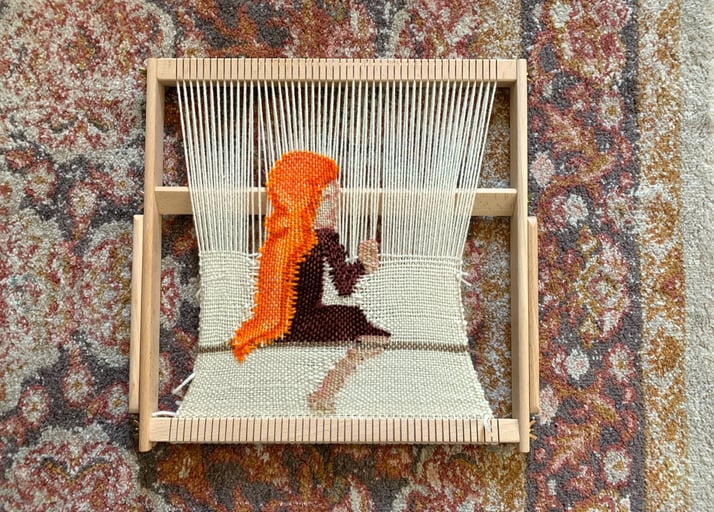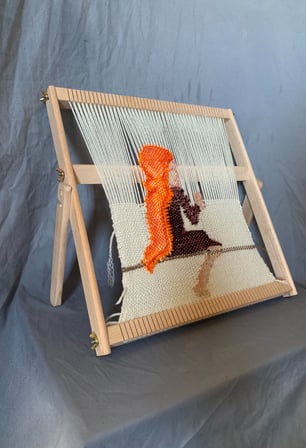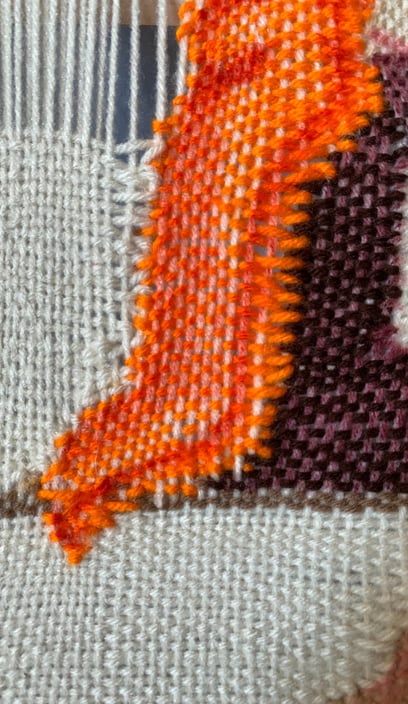To Those at the Looms
2020 | Yarn, wooden loom, marker
An investigation published in 2014, conducted through the François-Xavier Bagnoud Center for Health and Human Rights at the Harvard School of Public Health, found that:
“… the working conditions faced by children in the carpet sector are among the worst faced by any of the workers. Being children, they are of course weaker and more vulnerable than adults, rendering them easier to coerce and abuse. Children were regularly forced to work excessively long hours in extremely dangerous conditions. Many children worked, ate, and slept inside rural carpet shacks, rarely if ever stepping outside for weeks or months at a time. Children were more prone to verbal and physical abuse to keep them working, and they tended to suffer injury and health ailments more often. Children were often sent to factories or shacks to work off the debts of their fathers, or as was noted above, they might be sold for an advance on the false promise by the agent that a certain portion of their wages would be sent back to the parents. The brutal, corrosive, dangerous, and exploitative conditions suffered by countless child laborers in the hand-made carpet sector cannot be overstated.” – Siddarth Kara, Principal Investigator, pg. 32
To Those at the Looms aims to introduce the issue of child labor in the carpet-weaving industry in Asia. It is a textile work in that the central imagery is woven from yarn, but an object in that the wooden loom on which it was woven functions as part of the work itself. To Those at the Looms is 16’’ x 15 ½’’ and portrays a child figure sitting on a bench, her back to the viewer, her hand resting on the warp threads of the loom, weaving. The weave of the textile image is left unfinished from the point her hand is touching, to reinforce the idea that she is the one weaving this image. Her bright orange head covering symbolizes her youth and courage. Her future should be hers, and she should only have to weave carpets if she wants to.
Source: Siddarth Kara, Tainted Carpets: Slavery and Child Labor in India’s Hand-made Carpet Sector (2014), https://cdn1.sph.harvard.edu/wp-content/uploads/sites/2464/2020/01/Tainted-Carpets-Released-01-28-14.pdf
It is unsettling to think that I as a consumer have the potential to unwittingly support such an industry.
On the faux hardware floor of my living room lays a five by seven-foot rectangular carpet that I was gifted from my wedding registry nearly three years ago. I remember seeing it as I browsed Amazon and thinking it was lovely, that it would complement my furniture, and that it was affordable enough that someone would gift it to us.
Now it lays on my floor.
And, yes, it is aesthetically lovely, but it haunts me that I do not know where it came from, or who made it— and that I didn’t pause even for a second to ask myself those questions before wanting it.
Whose hands labored over those hundreds of lines
of tightly woven thread
so that my feet could tread on it?
Whose back ached at the loom
so that I could have
a home accent that matches my sofa and sitting
chair?
Did they wear an orange head covering?
Or wish they could go home to their parents
or have more to eat
or sleep a little longer?
I do not know the answer.
The realization of my own unawareness and naïve carelessness impassions me to educate myself, and to raise awareness for others.





